I am getting wildly diverging distances using two approximations to calculate distance between points on Earth's surface. I am using the Haversine (vectorized) approximation and the more precise (presumably) geopy.distance.geodesic .
As you can see I am off by five percent as the distances between points becomes large. Is this divergence due to rounding error in Haversine? Do I indeed trust the Geodesic? Here is code:
import numpy as np
lat = np.linspace(35,45,100)
lon = np.linspace(-120,-110,100)
data = pd.DataFrame({'Latitude':lat,'Longitude':lon})
def Haversine(v):
"""
distance between two lat,lon coordinates
using the Haversine formula. Assumes one
radius. r = 3,950 to 3,963 mi
"""
from timeit import default_timer as timer
start = timer()
R = 3958 # radius at 40 deg 750 m elev
v = np.radians(v)
dlat = v[:, 0, np.newaxis] - v[:, 0]
dlon = v[:, 1, np.newaxis] - v[:, 1]
c = np.cos(v[:,0,None])
a = np.sin(dlat / 2.0) ** 2 + c * c.T * np.sin(dlon / 2.0) ** 2
c = 2 * np.arcsin(np.sqrt(a))
result = R * c
print(round((timer() - start),3))
return result
def slowdistancematrix(data):
from geopy.distance import geodesic
distance = np.zeros((data.shape[0],data.shape[0]))
for i in range(data.shape[0]):
lat_lon_i = data.Latitude.iloc[i],data.Longitude.iloc[i]
for j in range(i):
lat_lon_j = data.Latitude.iloc[j],data.Longitude.iloc[j]
distance[i,j] = geodesic(lat_lon_i, lat_lon_j).miles
distance[j,i] = distance[i,j] # make use of symmetry
return distance
distanceG = slowdistancematrix(data)
distanceH = Haversine(data.values)
plt.scatter(distanceH.ravel(),distanceG.ravel()/distanceH.ravel(),s=.5)
plt.ylabel('Geodesic/Haversine')
plt.xlabel('Haversine distance (miles)')
plt.title('all points in distance matrix')
I would rather use the vectorized version becuase it is fast. However,the 5% is too big for me to be comfortable with it. Supposedly Haversine is only suppose to be off by .5%.
UPDATE:
Found error. when implementing the vectorized version I wasn't calculating all the distances between points, but only between some. I updated code to reflect this. Here is what the difference between Haversine and Geodesic are for my domain (25-55* by -125--110):
Pretty darn good!





